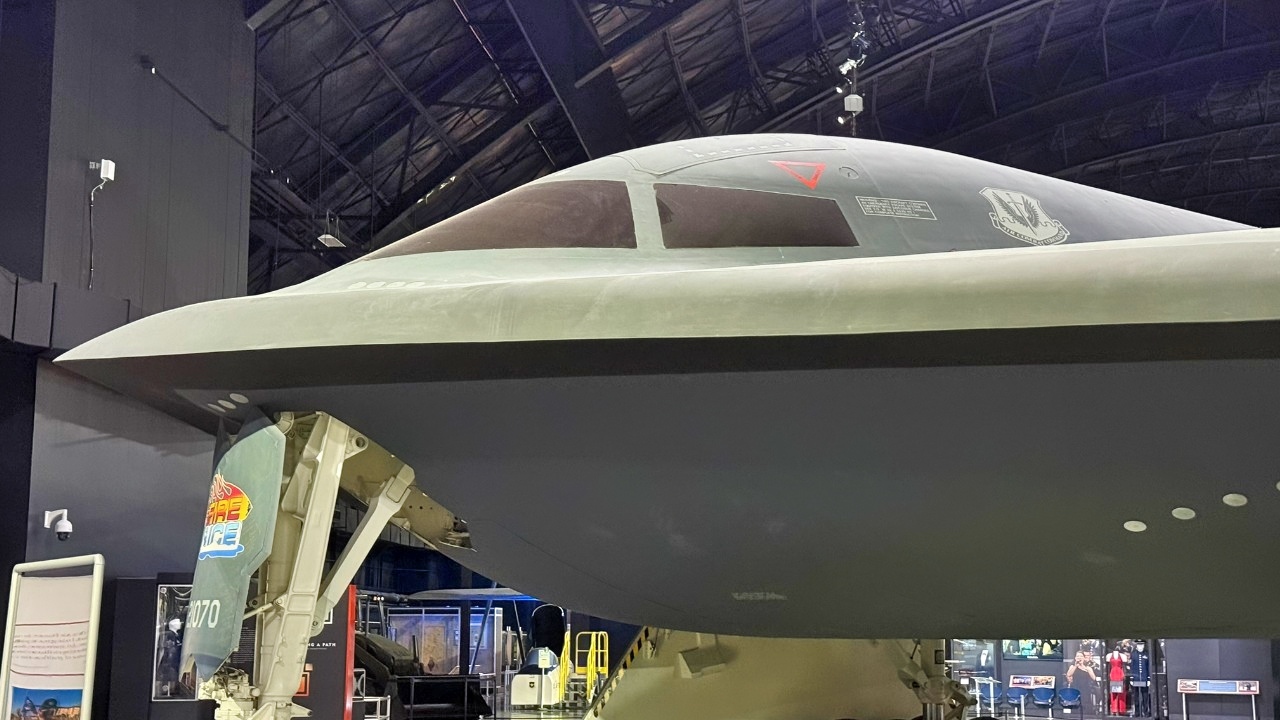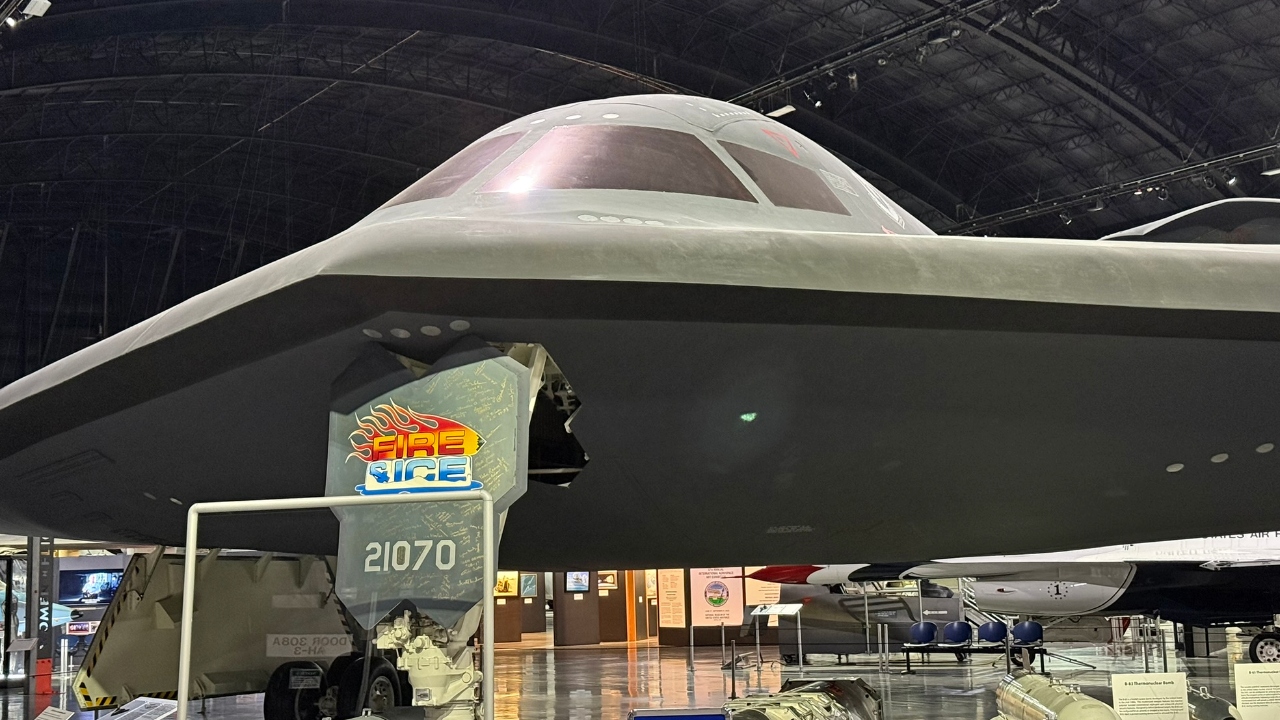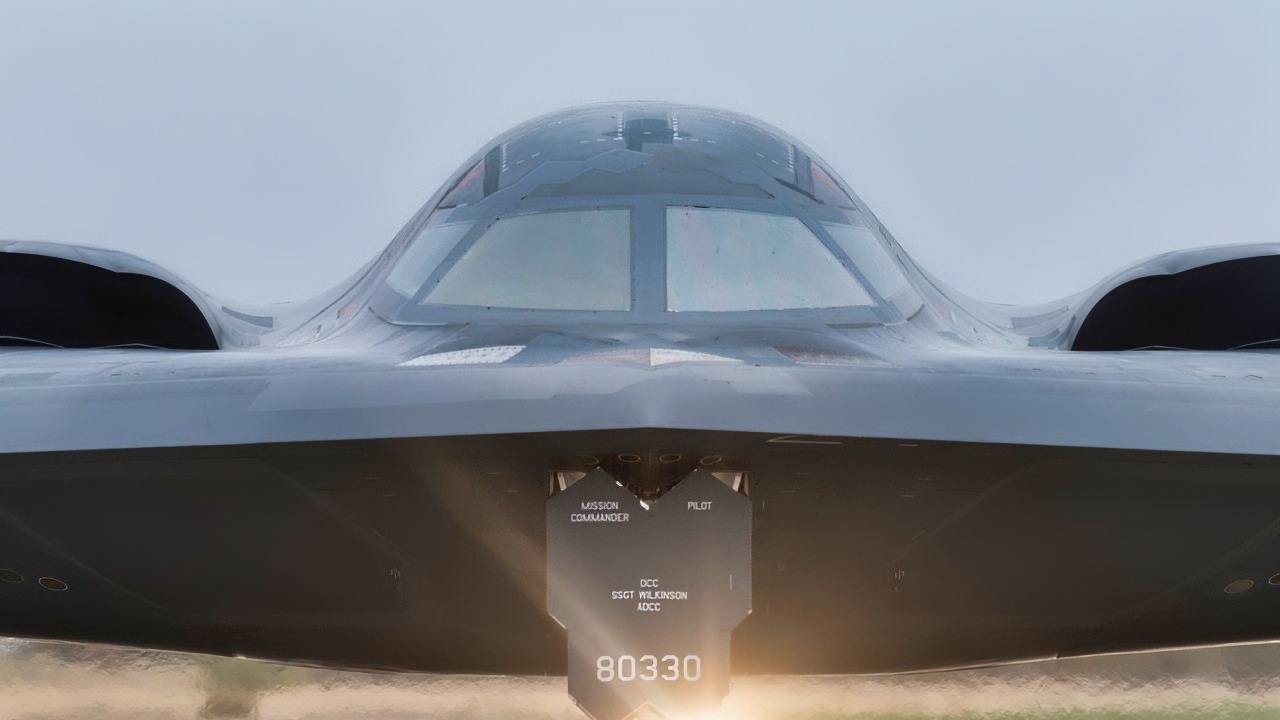Key Points and Summary – The Northrop Grumman B-21 Raider is the world’s first known 6th-generation aircraft, a next-generation stealth bomber designed to be the cornerstone of the U.S. Air Force’s future fleet.
-While its top speed is subsonic, similar to its B-2 predecessor, the Raider’s true power lies in its revolutionary stealth, endurance, and versatility.

B-2 Bomber At U.S. Air Force Museum. Image Credit: National Security Journal.
-It is engineered to be a multi-role platform capable of nuclear strikes, conventional bombing, intelligence gathering, and even battle management.
-With at least 100 aircraft planned, the B-21 represents a quantum leap in technology designed to penetrate the world’s most advanced air defenses.
The B-21 Raider: All the Technical Details You Want
The B-21 Raider is arguably the first publicly known sixth-generation aircraft ever to take flight. According to its designers, the B-21 is a quantum leap in stealth technology and fields some of the most sophisticated onboard electronics of any aircraft to date. It was designed for the USAF to replace the ageing B-1 Lancer and B-2 Spirit.
While most of the technical specifications of the aircraft are still classified, experts and analysts have pieced together a picture of more or less what we can expect from America’s next-generation bomber.
Engine Performance: How Fast is the B-21 Raider Stealth Bomber?
Speed is not the most essential feature of a strategic bomber, but in certain situations, an aircraft’s engine performance and maneuverability can mean the difference between life and death.
The U.S. Air Force has not released the aircraft’s top speed, and it is likely to remain classified for the foreseeable future.

B-2 Bomber @ U.S. Air Force Museum. Image Credit: National Security Journal.
However, based on its design and mission profile, it is widely believed that the B-21 is not a supersonic aircraft.
Instead, it is expected to operate at high subsonic speeds, likely in the range of Mach 0.85 to Mach 0.95.
This would place it in the same general speed category as the B-2 Spirit, which has a top speed of around Mach 0.95, or approximately 630 miles per hour.
Like its predecessor, the B-2, the B-21 was designed first and foremost with stealth in mind, with speed becoming a secondary concern.
In modern warfare, the ability to evade detection and strike from a distance is often more valuable than raw speed. Supersonic bombers like the B-1B Lancer, which can reach speeds of Mach 1.25, are more easily detected by radar and are therefore less survivable in heavily defended airspace.
The B-21, by contrast, is designed to slip past enemy defenses undetected, deliver its payload, and return safely without ever being seen.
Multi-Role Stealth Bomber
In terms of mission capabilities, the B-21 is designed to perform a wide variety of roles. It will serve as a strategic bomber, capable of delivering nuclear and conventional weapons across intercontinental distances.

A B-2 Spirit returns to Whiteman Air Force Base, Missouri, from a deployment to Diego Garcia, British Indian Ocean Territory, May 9, 2025. The 509th Bomb Wing and its fleet of B-2 aircraft serve as part of the U.S. Air Force’s conventional and strategic combat force with the capability to project U.S. airpower anywhere around the world. (U.S. Air Force photo by Senior Airman Devan Halstead)
It will also be equipped for electronic warfare, intelligence gathering, and battle management. The aircraft will be able to carry a mix of stand-off and direct-attack munitions, including precision-guided bombs and cruise missiles. Its modular payload bays will allow it to adapt to different mission requirements, and its compatibility with aerial refueling will enable it to operate globally without the need for forward bases.
The B-21 also incorporates several groundbreaking technological innovations. It was developed using digital engineering techniques, which allowed designers to create and test virtual prototypes before building physical models.
This approach reduced development time and cost while improving reliability. The aircraft is also designed to be cyber-resilient, with systems that can operate in environments where electronic warfare and cyberattacks are a constant threat. Additionally, the B-21 is built with cloud-based systems that enable real-time data sharing and mission updates, enhancing its ability to operate as part of a larger networked force.
Development of the B-21
The B-21 Raider was developed under the Long Range Strike Bomber (LRS-B) program, which began in 2011 as a response to the growing need for a modern bomber that could penetrate advanced enemy air defenses. Northrop Grumman was awarded the contract in 2015, and the aircraft was officially unveiled to the public in December 2022.

A B-2 Spirit Stealth Bomber, assigned to the 509th Bomb Wing, Whiteman Air Force Base, Missouri, taxis down a flight line, Oct 24, 2019. Total Force Airmen at Whiteman AFB are ready to execute the mission anytime, anywhere. (U.S. Air Force photo by Senior Airman Thomas Barley)
Its first flight took place on November 10, 2023, marking a significant milestone in U.S. military aviation. As of mid-2025, three B-21 aircraft are undergoing flight testing, with more in production.
The aircraft is named in honor of the Doolittle Raiders, the group of World War II airmen who carried out the daring bombing raid on Tokyo in 1942.
This name reflects the B-21’s intended role as a long-range, precision strike platform capable of reaching deep into enemy territory. It is designed to be dual-capable, meaning it can carry both conventional and nuclear weapons, and it is expected to operate in both manned and unmanned configurations in the future.
Building Upon the B-2 Spirit
In terms of aesthetics, the B-21 resembles its predecessor, the B-2 Spirit, with a sleek flying wing design that minimizes radar cross-section.
However, the similarities are largely superficial. The B-21 incorporates a host of next-generation technologies that make it far more capable and adaptable.
It is built using advanced stealth materials and shaping techniques that reduce its visibility to radar and infrared sensors. The aircraft also features an open systems architecture, which allows for easier upgrades and integration of new technologies over time.

A U.S. Air Force B-2 Spirit is prepared for operations ahead of Operation MIDNIGHT HAMMER at Whiteman Air Force Base, Missouri, June 2025.
The B-21 is often described as the cornerstone of the U.S. Air Force’s future bomber fleet. The current plan is to replace the aging B-1 and B-2 bombers with at least 100 B-21s, and possibly more depending on future needs and budget considerations.
The B-52, which has been in service since the 1950s, will continue to operate alongside the B-21 after receiving significant upgrades. Together, these aircraft will provide the United States with a flexible and survivable long-range strike capability well into the 21st century.
The Next-Generation Bomber is Already Here
The B-21’s role in the nuclear triad is also significant. As a dual-capable platform, it will provide a credible and flexible nuclear deterrent that can be deployed quickly in response to emerging threats. Its stealth and range make it particularly well-suited for this role, as it can reach targets anywhere in the world without being detected.

The B-21 Raider was unveiled to the public at a ceremony December 2, 2022 in..Palmdale, Calif. Designed to operate in tomorrow’s high-end threat environment, the B-21 will play a critical role in ensuring America’s enduring airpower capability. (U.S. Air Force photo)
This capability is especially important in an era where potential adversaries are developing increasingly sophisticated air defense systems.
Production of the B-21 is currently underway, with the aircraft in low-rate initial production. The first operational base will be Ellsworth Air Force Base in South Dakota, with additional bases planned at Whiteman Air Force Base in Missouri and Dyess Air Force Base in Texas. Northrop Grumman is the prime contractor, with key partners including Pratt & Whitney (which supplies the engines), Collins Aerospace, BAE Systems, and Spirit AeroSystems.
About the Author:
Isaac Seitz, a Defense Columnist, graduated from Patrick Henry College’s Strategic Intelligence and National Security program. He has also studied Russian at Middlebury Language Schools and has worked as an intelligence Analyst in the private sector.
More Military
We Almost Touched the F-117 Stealth Fighter










